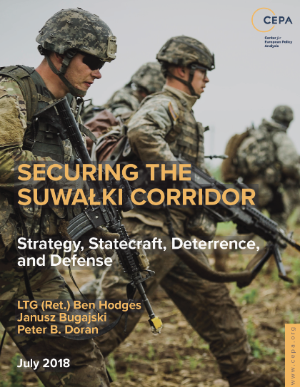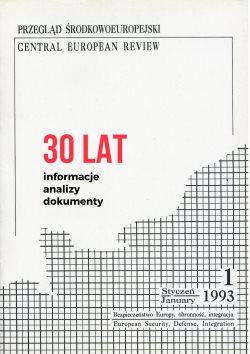
Strategy, Statecraft, Deterrence, and Defense
LTG (Ret.) Ben Hodges
Janusz Bugajski
Peter B. Doran
CEPA, Washington, July 2018
Findings
An effective political and military alliance must understand its weakest points and undertake effective remedial action. The Suwałki Corridor is one such area. Current dangers emanating from the Corridor require new ideas in strategy, statecraft, deterrence, and defense.
In the event of an unwanted future crisis between Russia and NATO, the Kremlin’s land forces operating from the Kaliningrad exclave and Belarus are in a position to close the Suwałki Corridor and impede NATO as a security guarantor to its three Baltic members: Lithuania, Latvia, and Estonia. The moment that a contest for control of Suwałki starts—likely from a hybrid or non-kinetic trigger—any dispute with Russia could escalate with alarming speed. It will be exceptionally difficult to “off-ramp” or “de-conflict.” This is a primary reason why NATO’s Cold War-era strategy and force posture needs an update. The Alliance must keep pace with new dangers. Western forces need to be closer to areas where NATO members face a threat; their positioning around Russia’s borders should demonstrate the readiness, resolve, and speed of allies to respond when challenged
